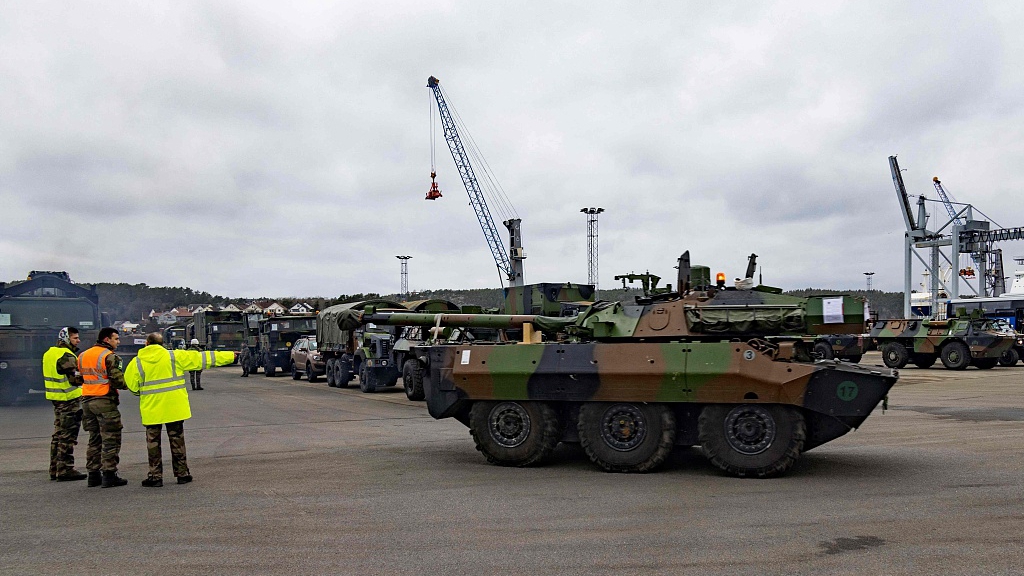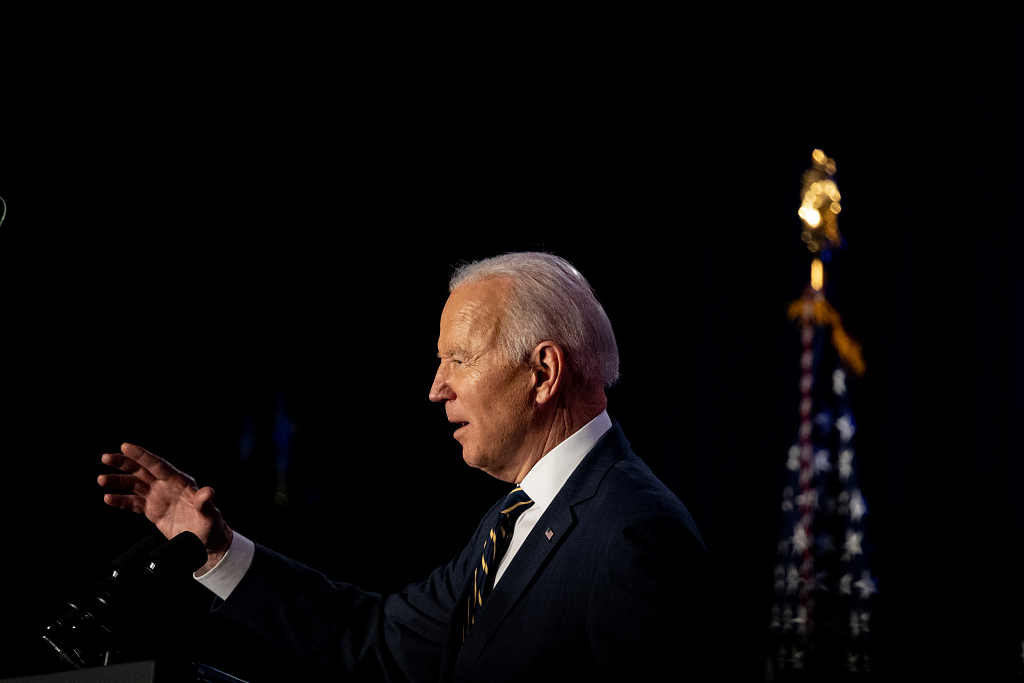
Equipment and armored vehicles of NATO's rapid reaction force brigade in Norway for the military exercise Cold Response 22 arrive at Borg Havn in Fredrikstad, Norway, March 10, 2022. /CFP
Equipment and armored vehicles of NATO's rapid reaction force brigade in Norway for the military exercise Cold Response 22 arrive at Borg Havn in Fredrikstad, Norway, March 10, 2022. /CFP
Editor's note: Jonathan Arnott is a former member of the European Parliament. The article reflects the author's opinions and not necessarily the views of CGTN.
NATO is conducting military exercises in Norway. That should not come as a surprise, partly because it was already planned before Russia's "special military operations" on Ukraine but also because armies need to ensure that they are well prepared for any hostilities in cold environments.
It is, ironically, Russia itself which has shown this on numerous occasions throughout history. Napoleon's invasion of Russia in the 19th century proved to be his decisive mistake, with Russia simply retreating until the cold of a Russian winter froze Napoleon's troops.
During the Soviet-Finnish War (The "Winter War") of 1939-1940, Finland put up fierce resistance against a Soviet Army which had overwhelming manpower but whose commanders were inexperienced. The apparent failures of Soviet troops to quickly defeat a much weaker enemy emboldened Nazi Germany's Adolf Hitler to invade Russia just a couple of years later during World War II, but Russia had learned its lessons – and defensive wars in cold climates are far easier to fight than offensive ones.
Hitler's repeat of Napoleon's blunder led to the same outcome, changing the course of global history. Time and again it has been proven, mainly by Russia, that the ability to maneuver is restricted by terrain and climate.
For geographical reasons, Norway is unlikely to be the target of any military attempt. While Norway does share a small border with Russia at its northeasterly tip, that border is hardly in a strategic location. The exercise itself is not noteworthy as it normally takes place every two years and was postponed due to the COVID-19 pandemic, but the scale has gradually increased from 9,000 troops in 2010 to around 30,000 this year.
However, the invitation to Sweden and Finland to participate is more notable. Sweden and Finland are pushing to join NATO in light of recent events.
Across in America, President Joe Biden has made a significant strategic mistake by announcing his plans to the whole world on social media: "I want to be clear: We will defend every inch of NATO territory with the full might of a united and galvanized NATO. But we will not fight a war against Russia in Ukraine. A direct confrontation between NATO and Russia is World War III. And something we must strive to prevent."
The position in itself is perfectly reasonable and affirming his commitment to NATO's Article 5; articulating that position publicly is a serious error. Russia now knows America's plan for sure, while America can only guess at Russia's.

U.S. President Joe Biden speaks during the House Democratic Caucus Issues Conference meeting in Philadelphia, Pennsylvania, U.S., March 11, 2022. /CFP
U.S. President Joe Biden speaks during the House Democratic Caucus Issues Conference meeting in Philadelphia, Pennsylvania, U.S., March 11, 2022. /CFP
In a world where information is king, the president of the United States has provided certainty to potential adversaries. For all the many flaws of previous President Donald Trump, at least he instinctively understood the need to keep opponents guessing about his true intentions.
Biden's words appear to make clear that Finland and Sweden, both members of the European Union, cannot currently count upon the support that Norway can. Some things are better left unsaid: according to the ancient Roman general Vegitius, "if you want peace, prepare for war." Across the globe and throughout history the advice holds, at least as far as conventional weaponry is concerned.
In Ukraine, Russia's advances have been slower and more costly than it anticipated. Ukraine claims that over 12,000 Russian soldiers have already been killed. Such a figure should be taken with more than a pinch of salt because it suits Ukraine's public relations to play up its own resistance, to announce Russian equipment destroyed or captured, and to make political capital out of Russian military defections.
Nevertheless, considerable damage has clearly been inflicted. The weather is clearly a factor here too, with cold and mud limiting the routes available to Russian troops.
Western nations lack recent experience of combat in cold climates, and continuing with regular NATO exercises in such conditions should be seen as contingency planning rather than any expectation of conflict. At present they do not fear Russia's conventional armies.
The strength of an army is a product of quantitative and qualitative factors. It's easy to assess the number of personnel and the nature of equipment, but much more difficult to know the quality of the chain of command, morale and logistical support until a war begins.
Western nations have downgraded their opinions of Russia's military capacity based upon those qualitative factors affecting its performance over the last couple of weeks, and because they assume that economic sanctions will eventually affect Russia military capacity. History has a habit of repeating itself and underestimating Russia has proven costly in the past.
Western nations would do well to remain cautious, and I think NATO exercises should be seen in that light. But their greater fear is the threat of a global catastrophe if conflict between two nuclear powers were ever to escalate. That is one winter which nobody ever wishes to contemplate.
(If you want to contribute and have specific expertise, please contact us at opinions@cgtn.com. Follow @thouse_opinions on Twitter to discover the latest commentaries on CGTN Opinion Section.)

